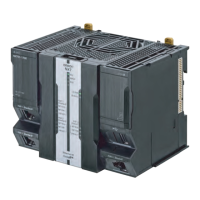6-2 Execution Log
This section describes the Execution Log used to trace the executions of the DB Connection
Service.
6-2-1 Overview
You can check the start/stop of the DB Connection Service, connection/disconnection with the
DB, and success/failure of SQL statement executions with the Execution Log. Thus, you can
check whether the expected DB Connection Service processing is executed.
You can record this log by setting Execution log to Record in the DB Connection Service Settings
of Sysmac Studio. You can also record a specified log as Execution Log by executing a
DB_PutLog (Record Operation Log) instruction.
When you record this log, the Execution Log file is constantly saved on the SD Memory Card
mounted in the CPU Unit while the DB Connection Service is running.
The Execution Log is temporarily recorded in the internal buffer (volatile memory) of the CPU Unit
and then saved on the SD Memory Card. While the SD Memory Card is being replaced, the
Execution Log is kept in the internal buffer (volatile memory) of the CPU Unit. When you insert an
SD Memory Card, the Execution Log temporarily stored in the internal buffer is automatically
saved on the SD Memory Card. Refer to 6-5-3 Operation Log Operations in Replacing the SD
Memory Card for details.
You can check the contents of this log in the Execution Log Tab Page of the Operation Log
Window in Sysmac Studio.
Precautions for Correct Use
When you use the Execution Log, be sure to insert an SD Memory Card into the CPU Unit.
The Execution Log is temporarily recorded in the internal buffer of the CPU Unit and then
saved on the SD Memory Card. If no SD Memory Card is mounted at power OFF or
shutdown processing of the CPU Unit, the Execution Log recorded in the internal buffer will
be lost.
6-2-2 Application Procedure
Use the Execution Log according to the following procedure.
Step Reference
1. Set the Execution Log. Refer to 6-2-3 Setting the Execution Log.
↓
2. Check the Execution Log. Refer to 6-6 Checking the Operation Logs.

